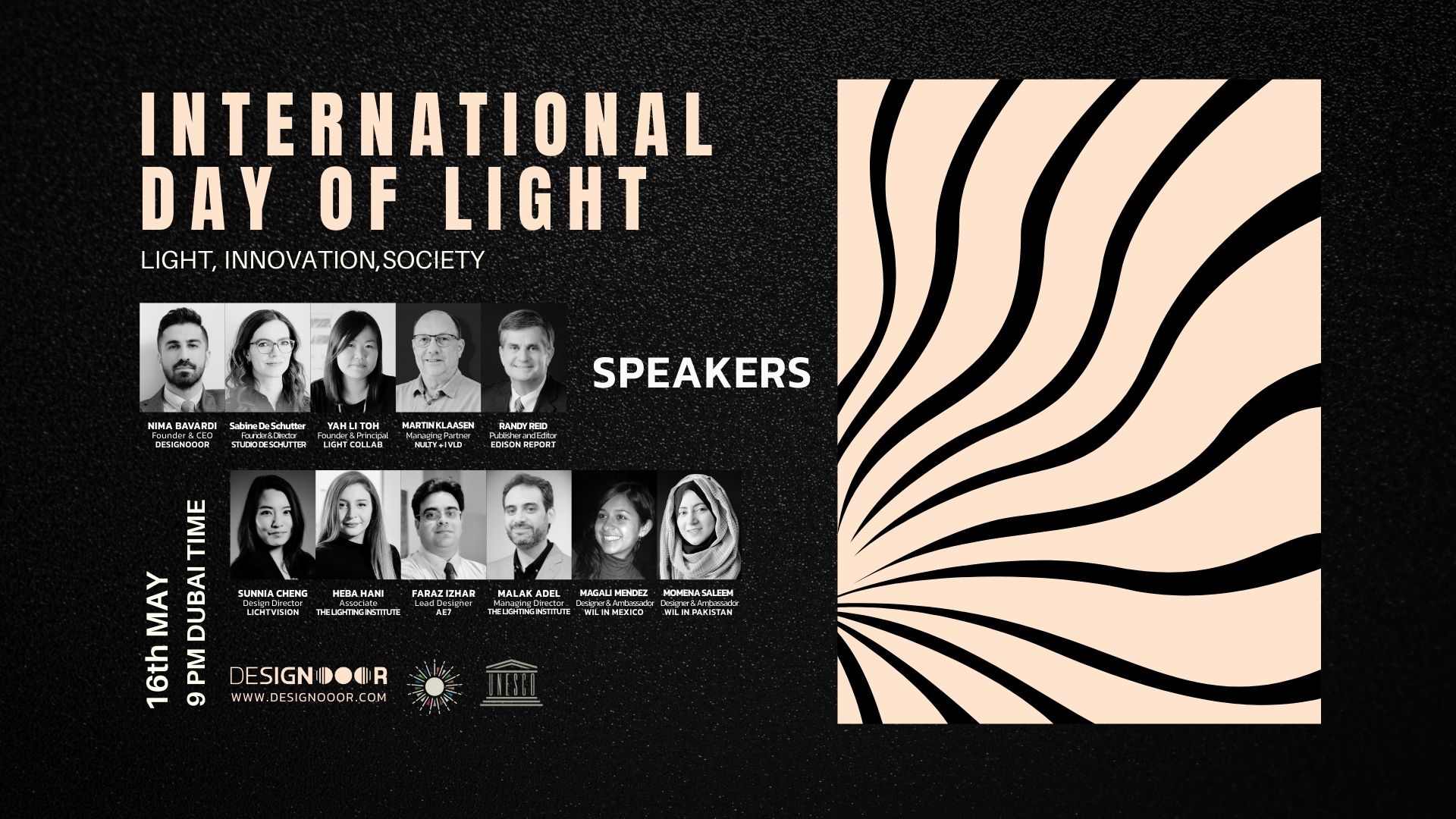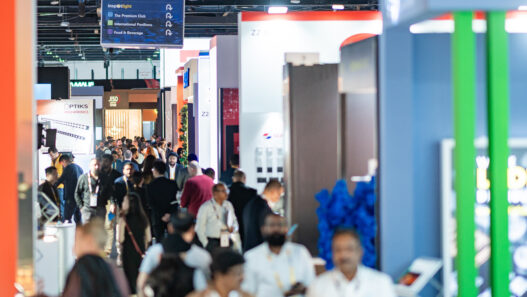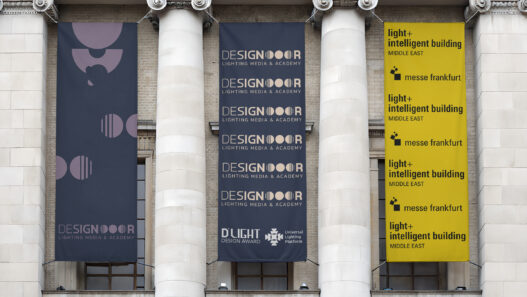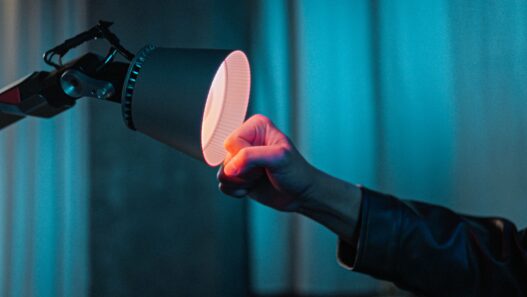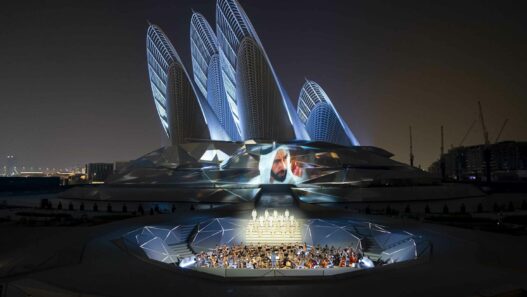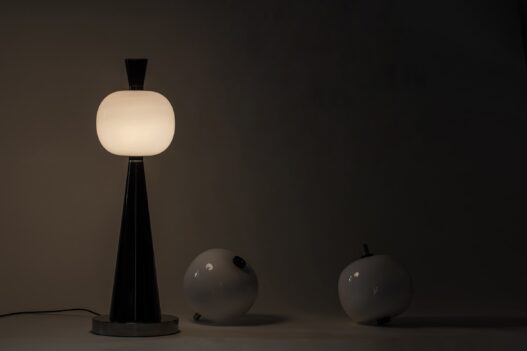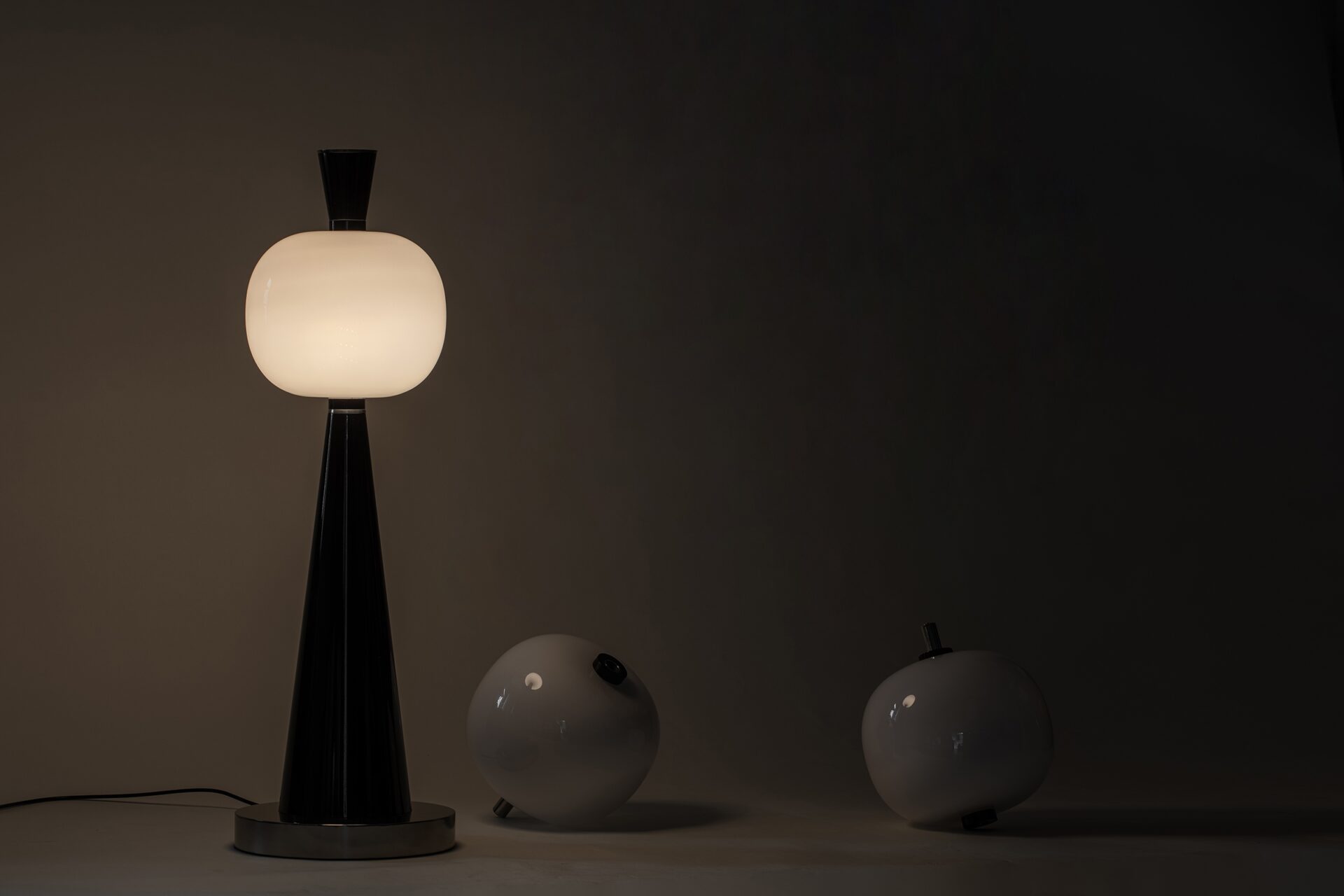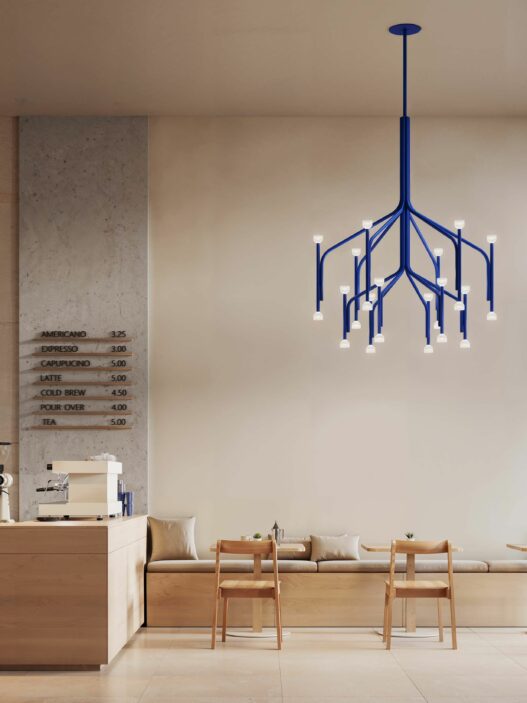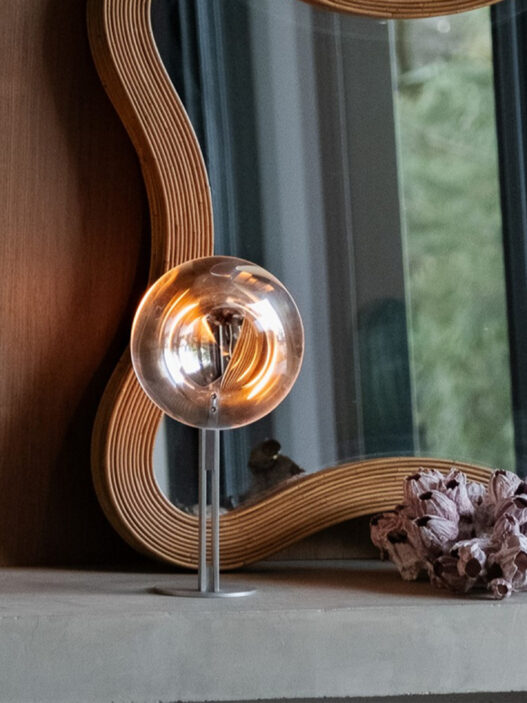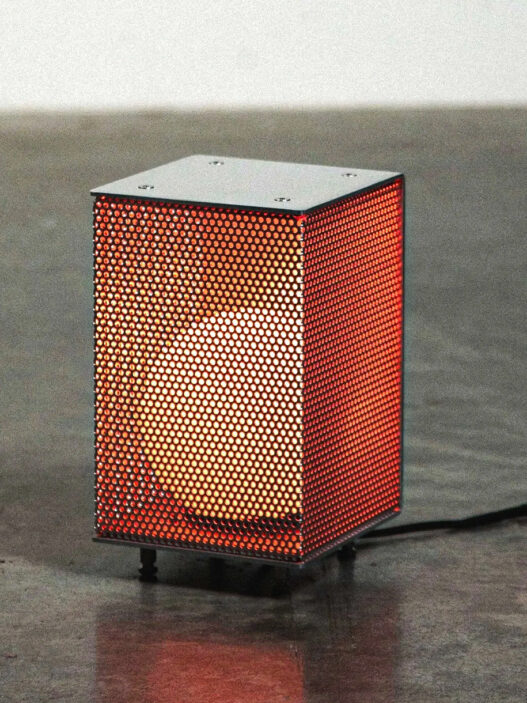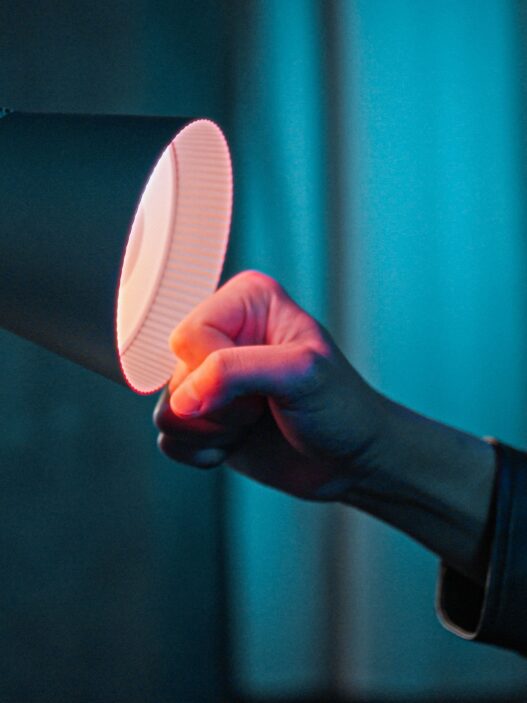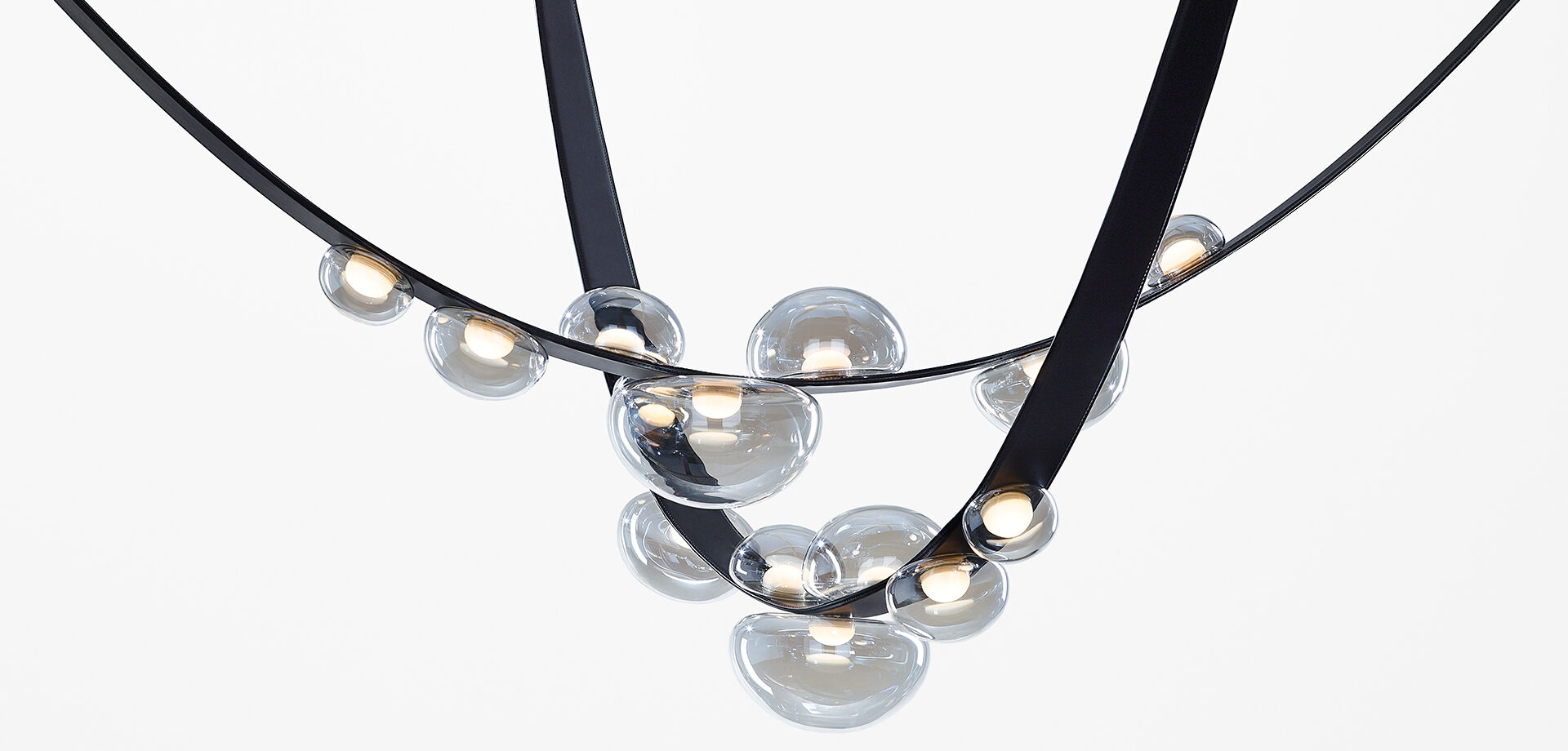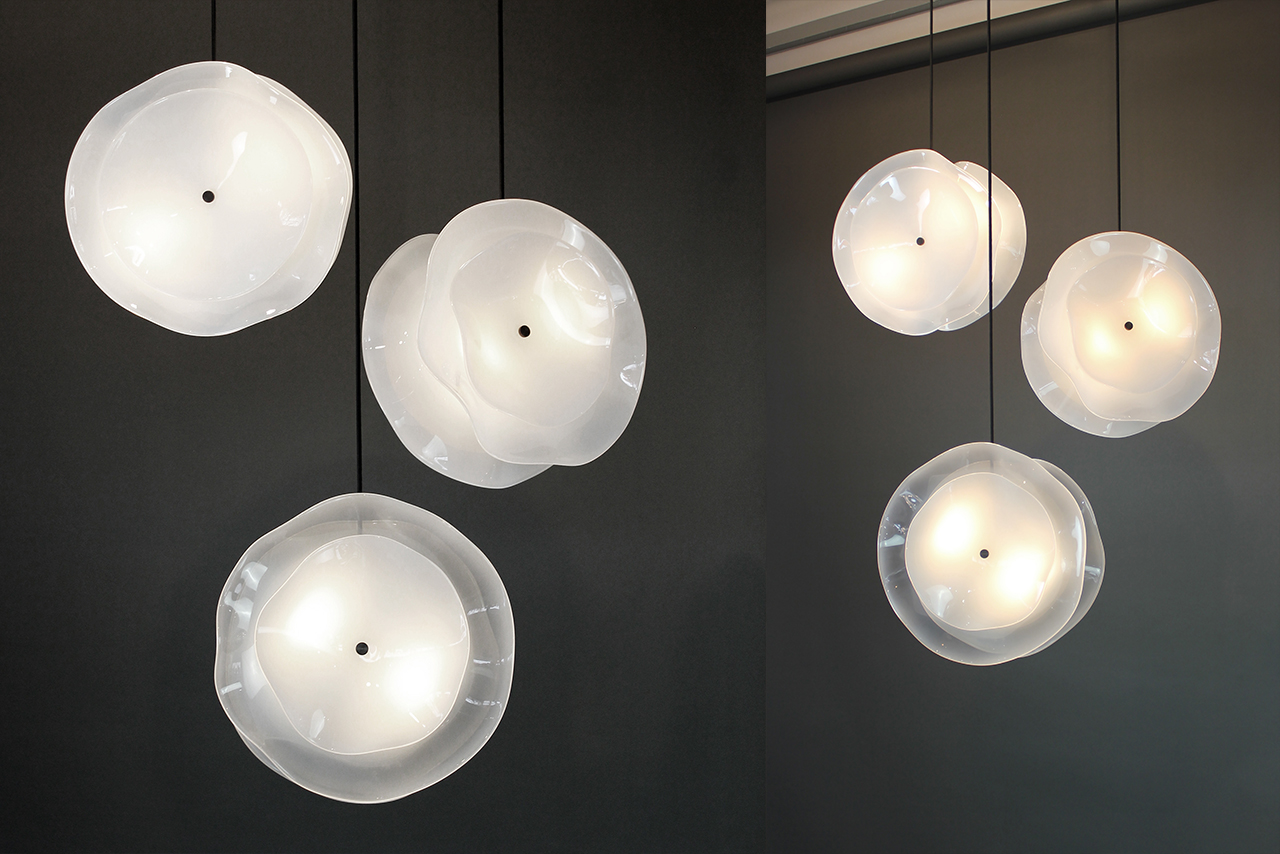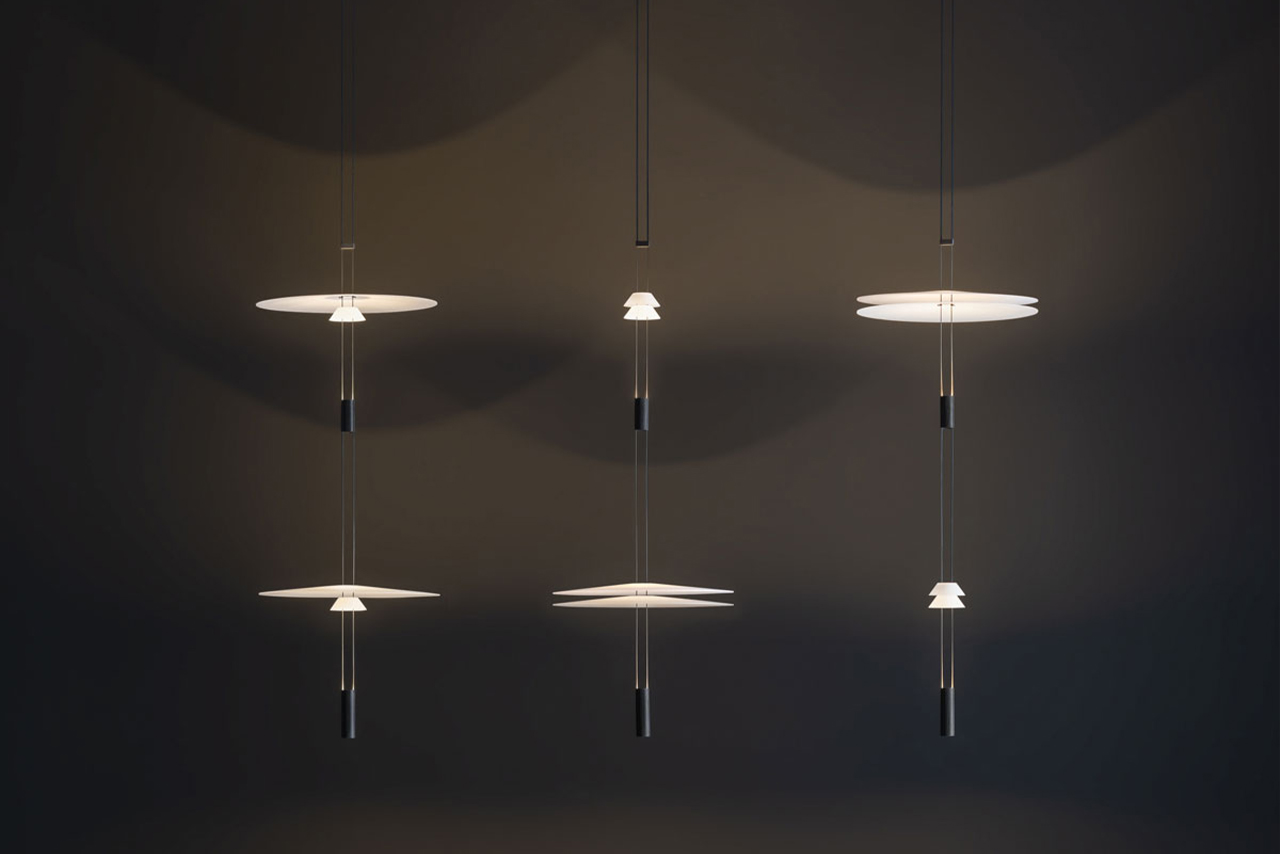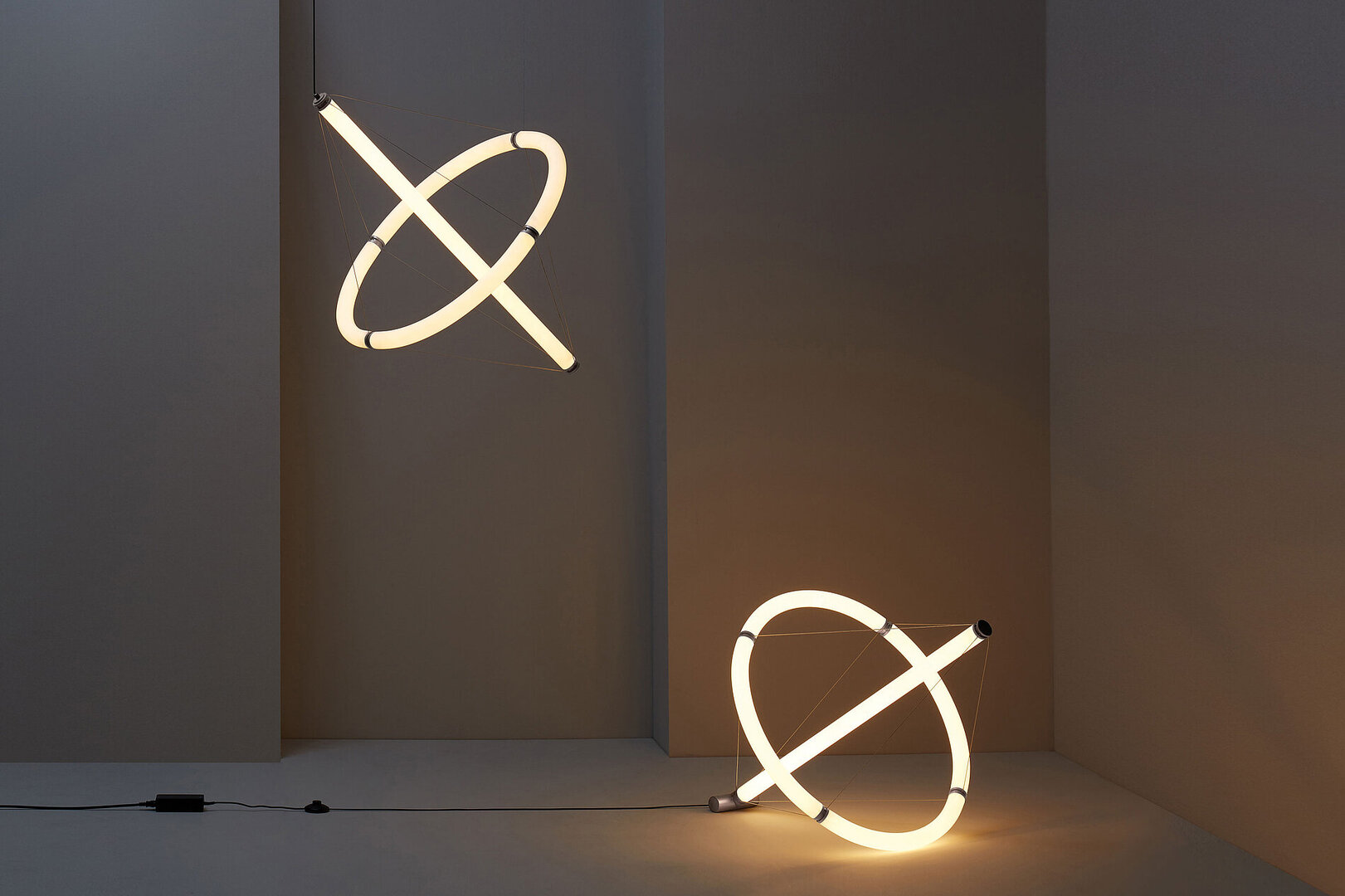Three-unit stacked lighting piece
The Tang Hulu Floor Lamp doesn’t try to impress with its form or symbolism at first glance. The reference to the traditional candy is simply a conceptual seed, not the main narrative. What the designer seems to have sought is a relationship between object and light that feels both functional and emotional, without turning into a decorative statement. The three glass spheres stacked on a conical base create a calm visual rhythm, a continuous light that is neither harsh nor uncertain.
Here, the light behaves softly; it diffuses rather than emphasizes. The milky glass absorbs reflections and produces an illumination that blends into the space, smoothing its surfaces and removing edges. In interiors with matte or semi-gloss finishes, this creates a quiet and comfortable presence, but in reflective environments, overlapping layers of light might reduce the clarity of visual boundaries, something that could be perceived as a limitation in projects where light control is highly critical.
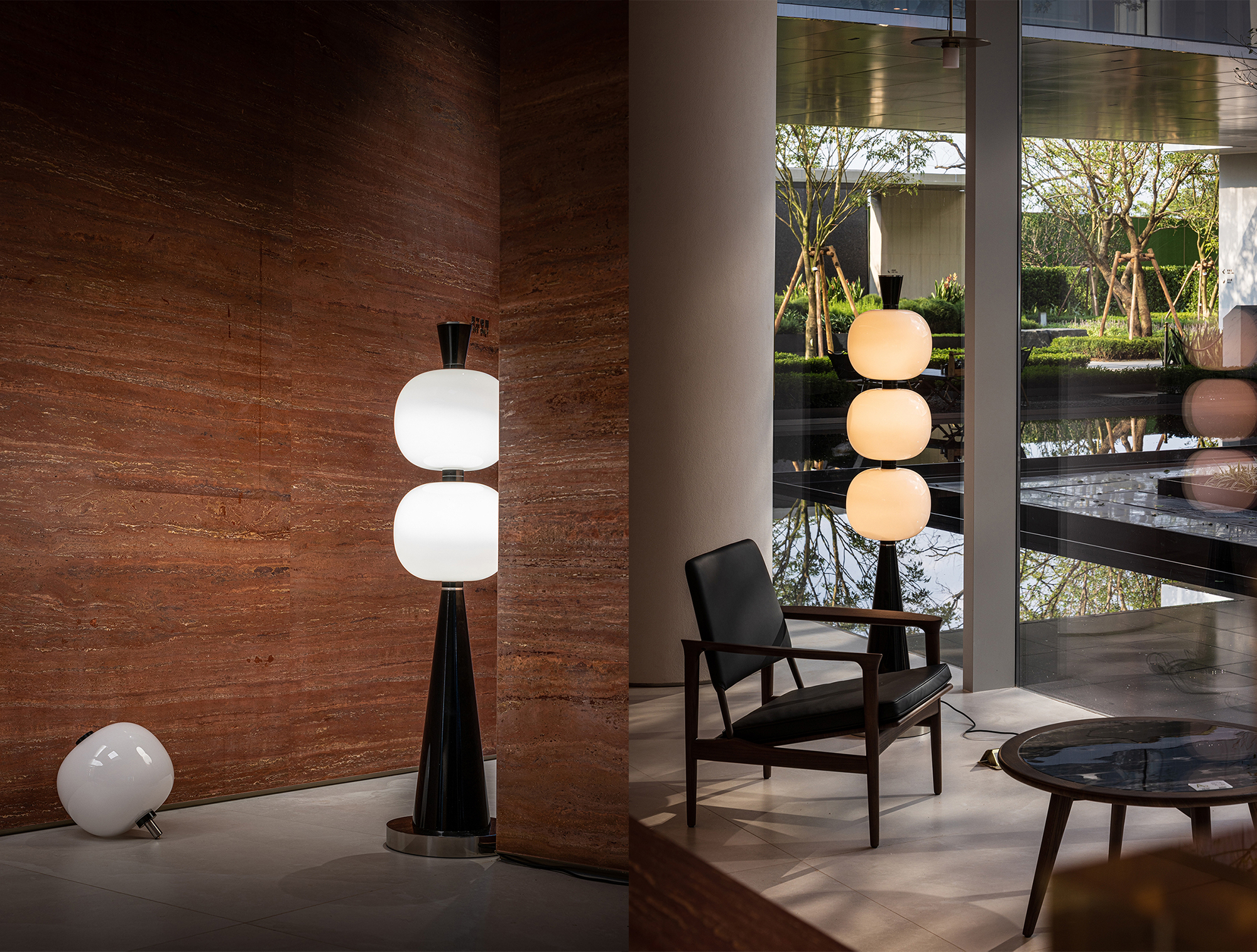
The conical base is a deliberate choice, not only for physical stability but also to anchor visual weight at the bottom of the composition. It keeps the structure balanced, though it can appear somewhat heavy in minimalist layouts. The dark metallic surface creates a healthy contrast with the soft volume above, yet at close range, light reflections on the glossy surface slightly disturb the stillness of the form.
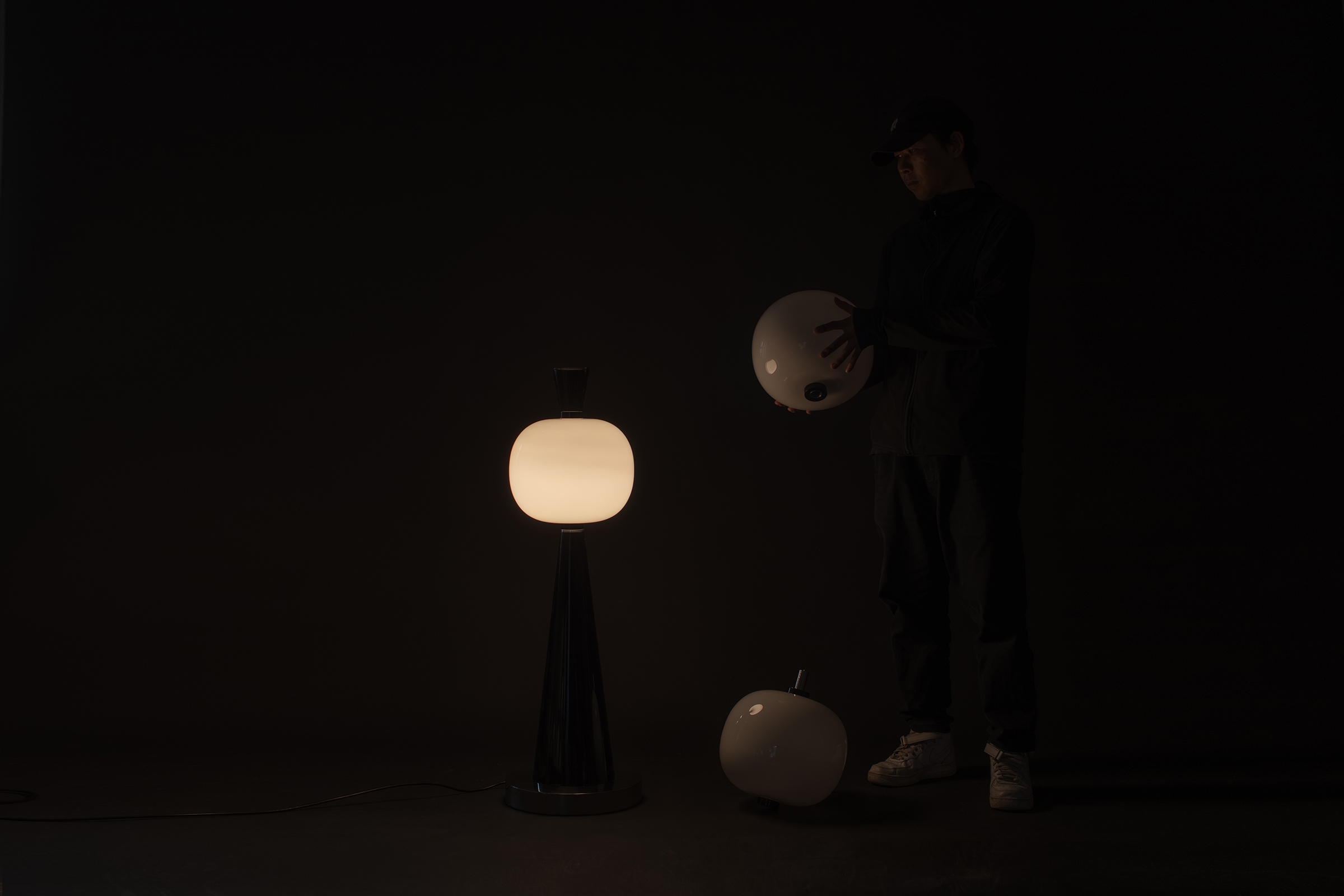
Technically, this is where the designer’s thinking becomes evident. The modular, detachable system allows users to define their own relationship between light and space. It’s a simple but clever approach, not aiming for complexity, but for human-scale control. With a single module, the light feels private and grounded, suitable for intimate moments. With all three, it rises in height and shifts the atmosphere toward sociability. This demonstrates a clear understanding of how light behaves in relation to volume and eye level, turning the product into a flexible spatial element rather than a fixed lamp.
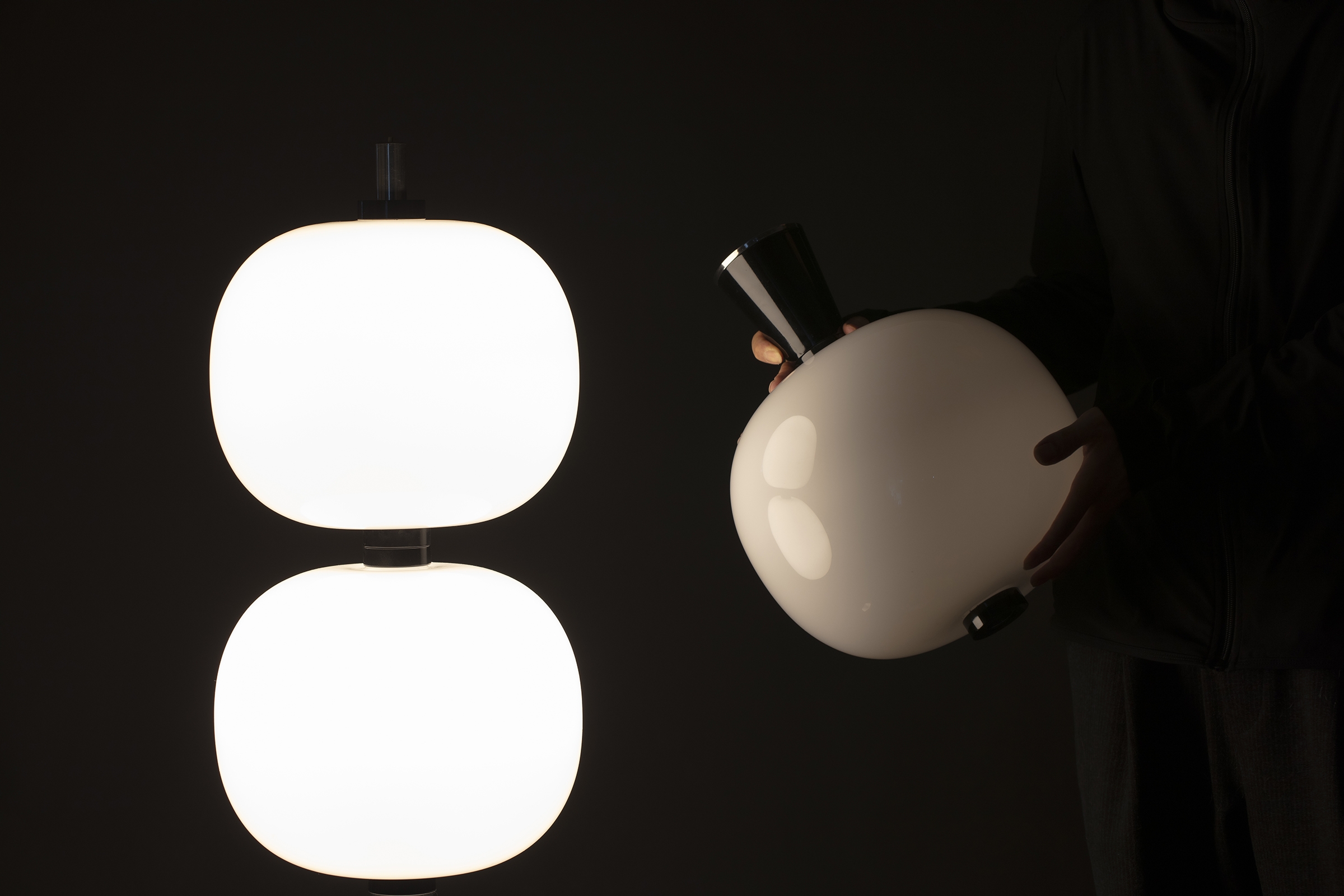
From a production standpoint, the connections between modules are neat and precise, though the visible link to the power cable could have been refined to preserve the purity of the form. Up close, the junctions carry a slightly industrial tone, perhaps intentionally left that way to keep a sense of material honesty and craft.
